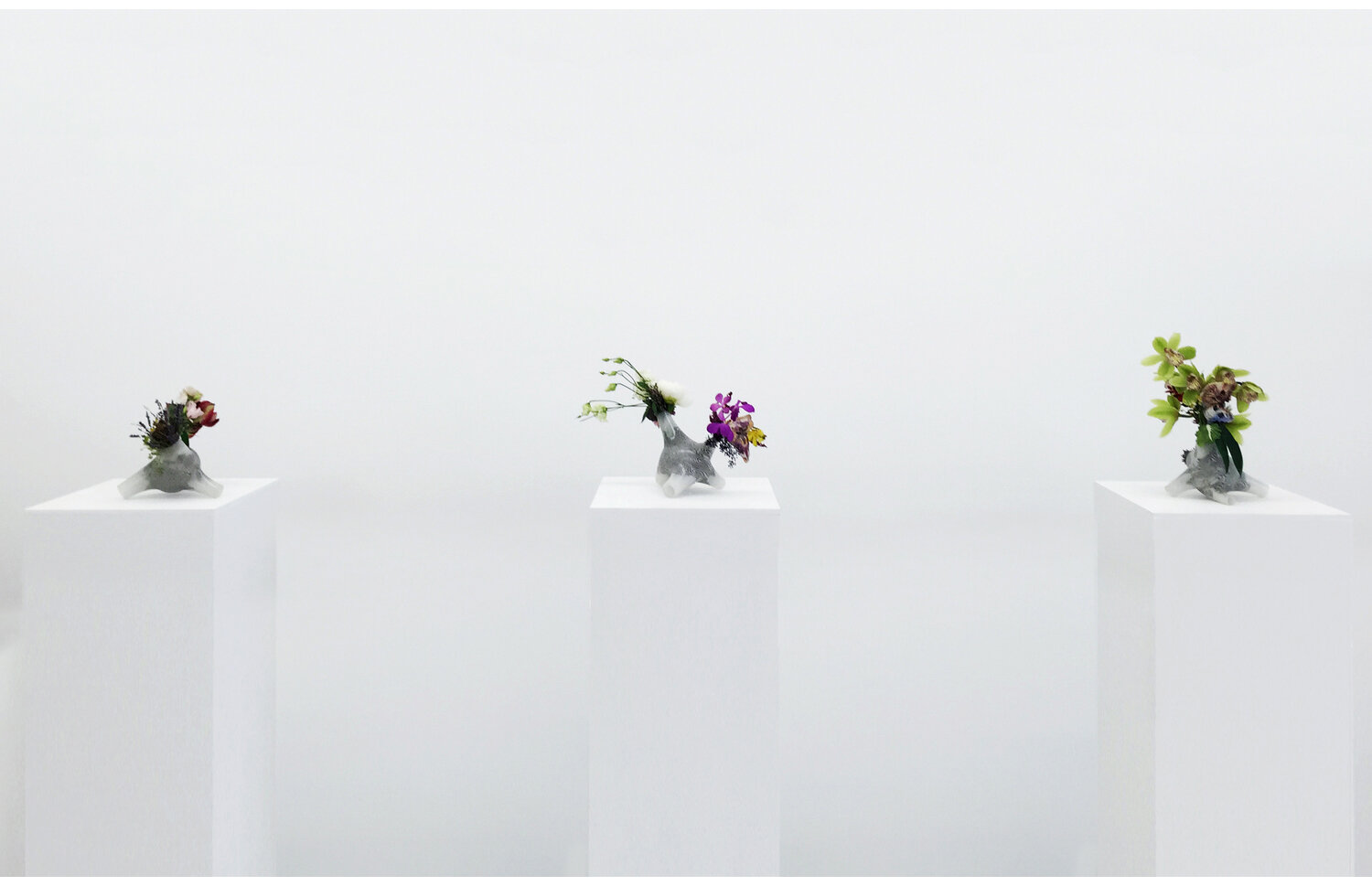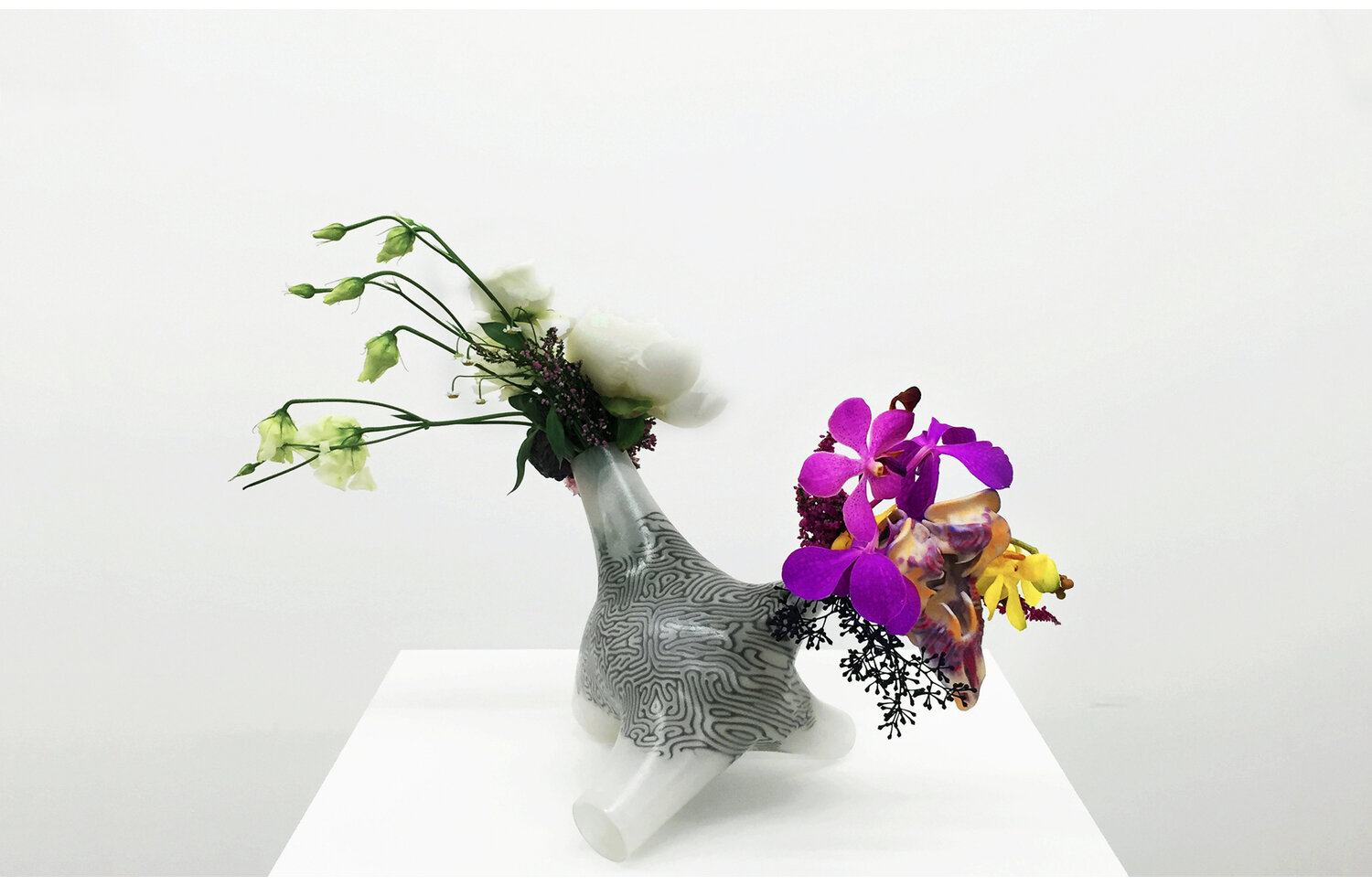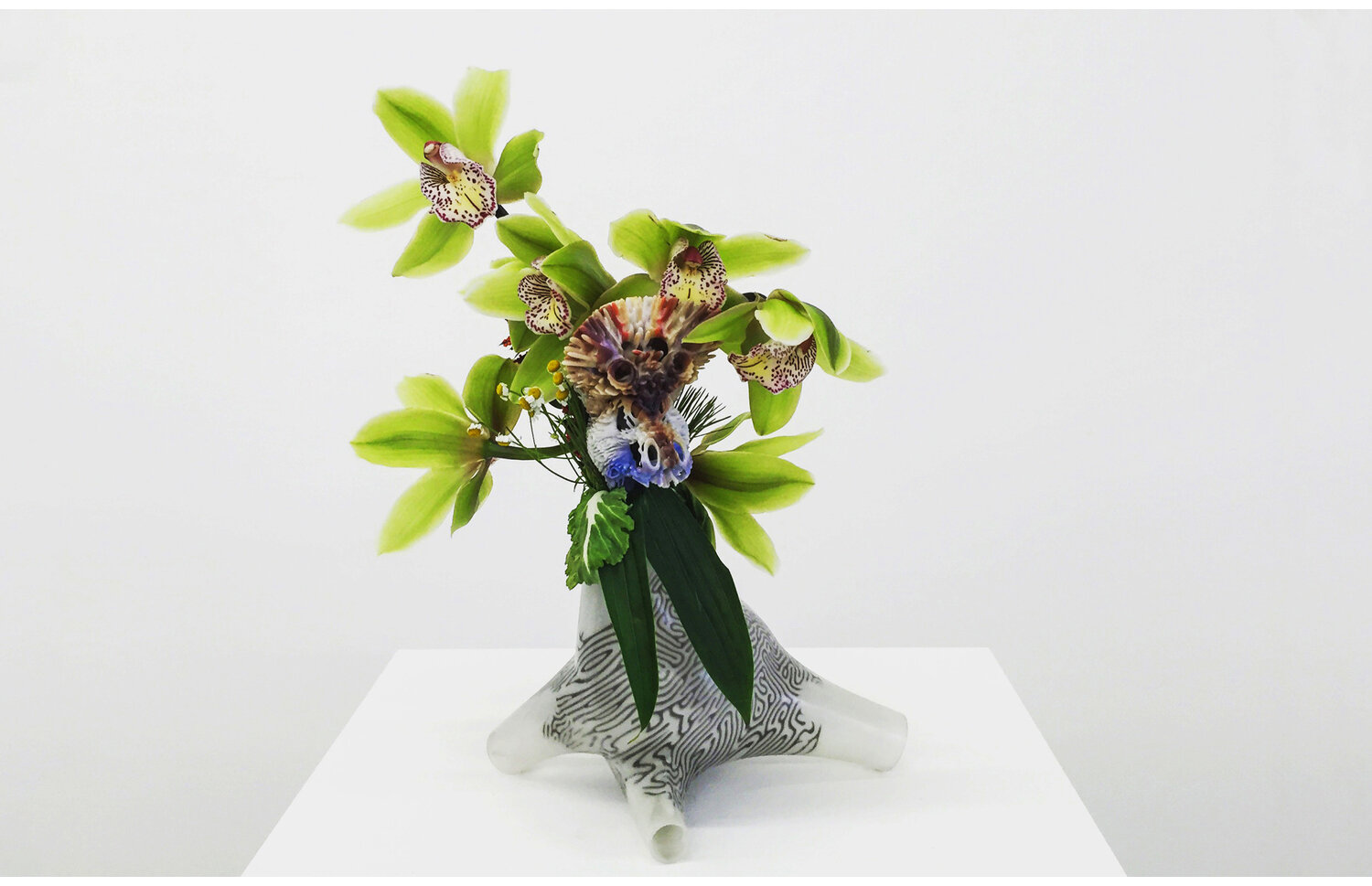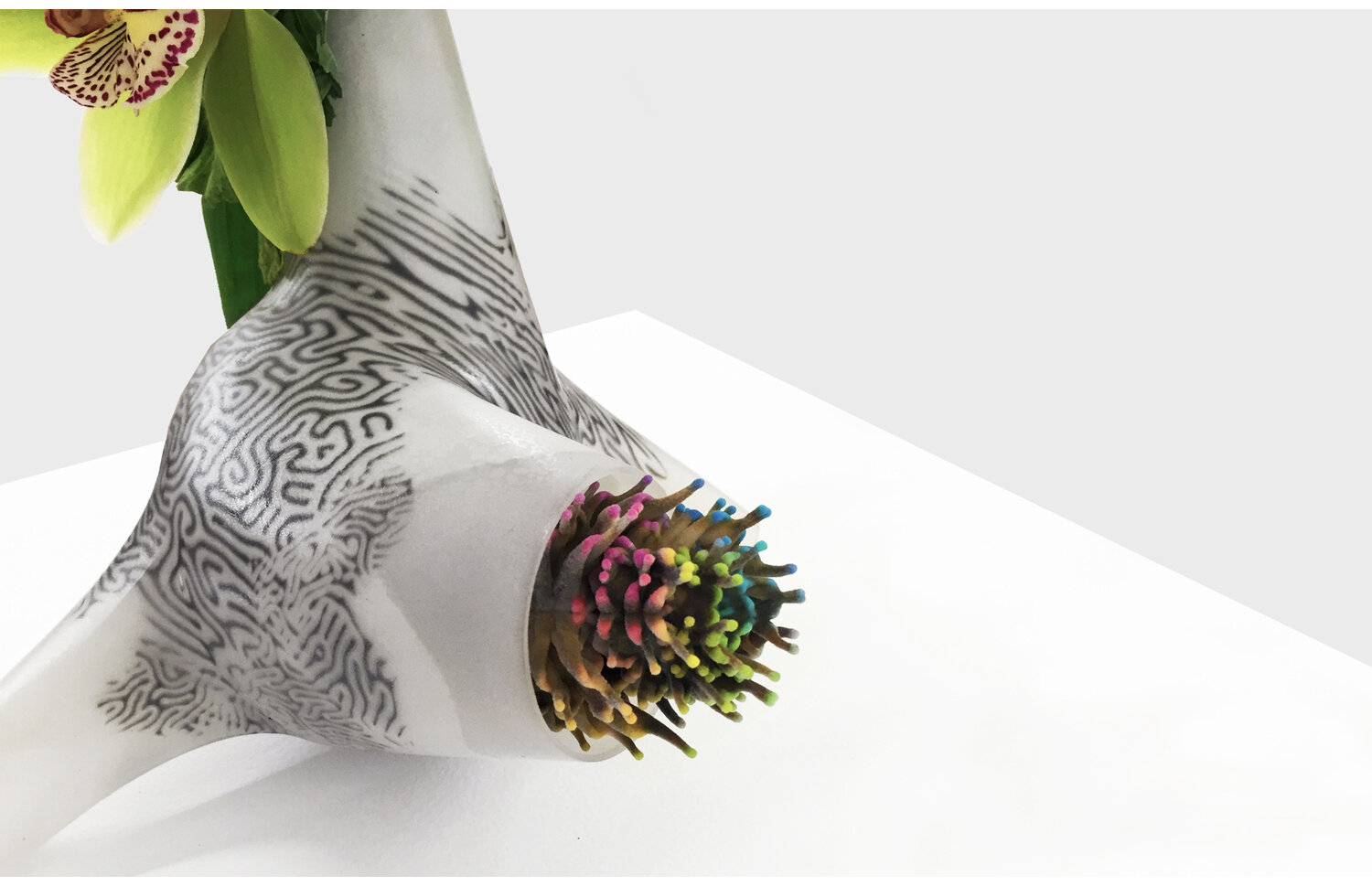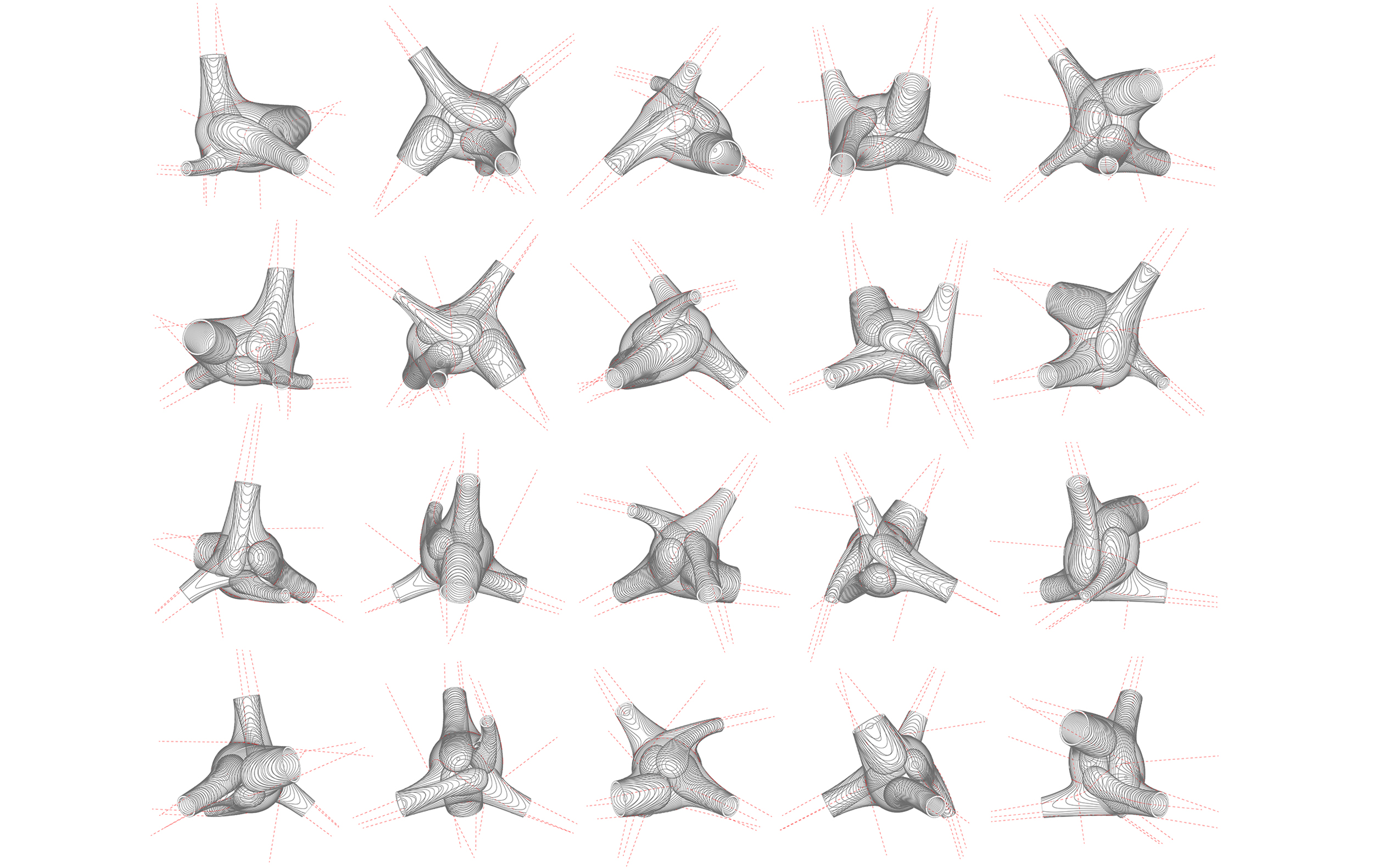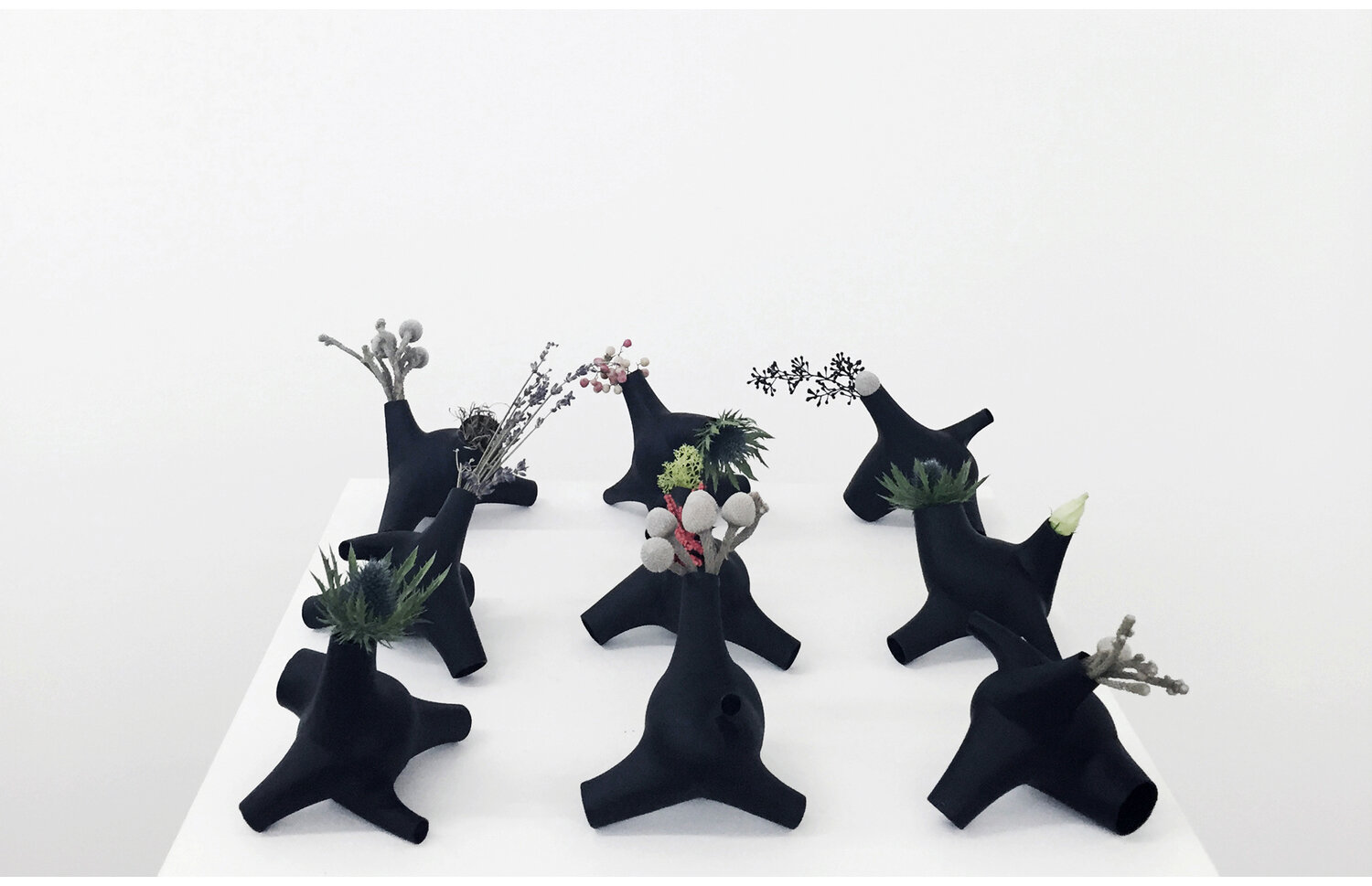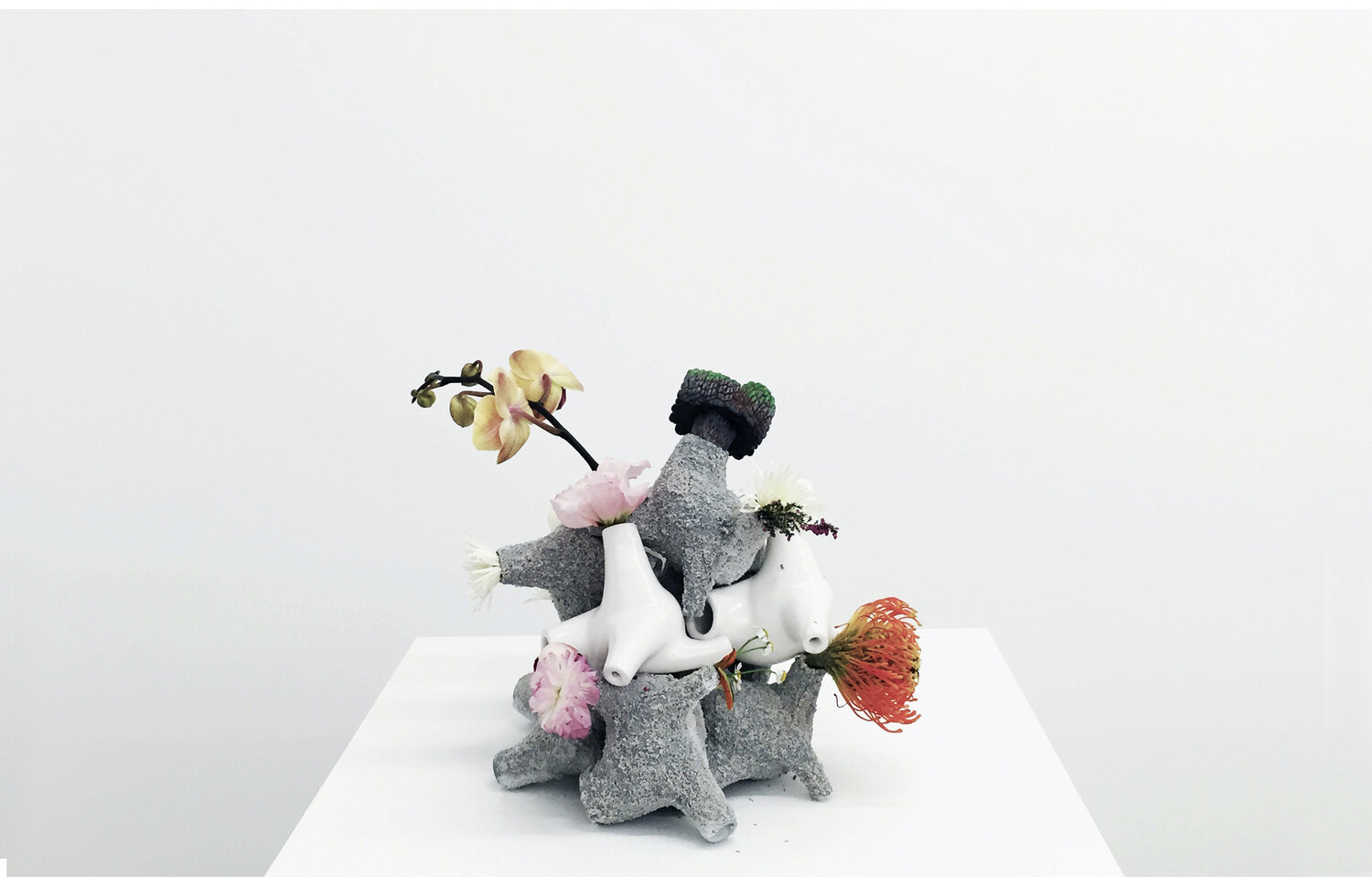Base Flowers
Location: Volume Gallery, Chicago IL
Type: Exhibition
Structure: Multimaterial 3D print, Resin, Full color sandstone
Year: 2015
Team: Sina Ozbudun, Isidoro Michan
Attention Shifts
There is a conflict in the aesthetics of the cut flower. It is a living thing purposely severed and put-on display through the abstraction of a vase. A flower vase has three primary objectives. The first is to hold water suspending the flower’s death. The second, to position or pose the flower in a particular gesture. And lastly, to disappear, allowing the flower to be the prime figural focus. Considering this combination, a vase is closer to a support system or a base that sinks into the background, directing attention to the flower it displays.
The vases/bases developed for Base Flowers are a combination of five vase positions in one. The base can be arranged in multiple orientations to privilege one vase over another. The different positions have different character allusions that attempt to animate the neutrality of a common vase by bringing attention to the qualities of the vase itself. Some postures are funny, some curious, some attentive, some awkward, but in each case, it is the vase that an observer notices first.
This odd inversion of a vase which attracts more attention than the object displayed offered an opportunity to experiment with the flowers themselves. Base Flowers also developed five new flowers designed as mutant species somewhere between the floral, biological, geological, and digital. These new flowers are primitive specimens, both in their aesthetics as a well as their digital origin. As such, they are not attempting to mimic any existing flower, but are instead the “base” flowers for an alternate understanding of floral aesthetics. The cut flower in a vase is an artificial construct, an abstracted fragment of nature, severed, re-contextualized, and posed for aesthetic contemplation.
A final stage in the project’s paraficitional scenario is a series of enlarged renderings of the flower surfaces. Scale and resolution are intimately related in a digital model, as the designer is constantly zooming in and out of a design. One of the artifacts we attribute to “the real” is that it operates at multiple scales. For these digital renderings we modeled different details and textures at different scales and resolutions implying that as one zoomed into the artifice of the surface, there were ever more aspects that would appear, ever more levels to the reality that appears as a fiction.
© All content © Young & Ayata

